In Images: A New Look at T. Rex and Its Relatives
Fearsome and feathered
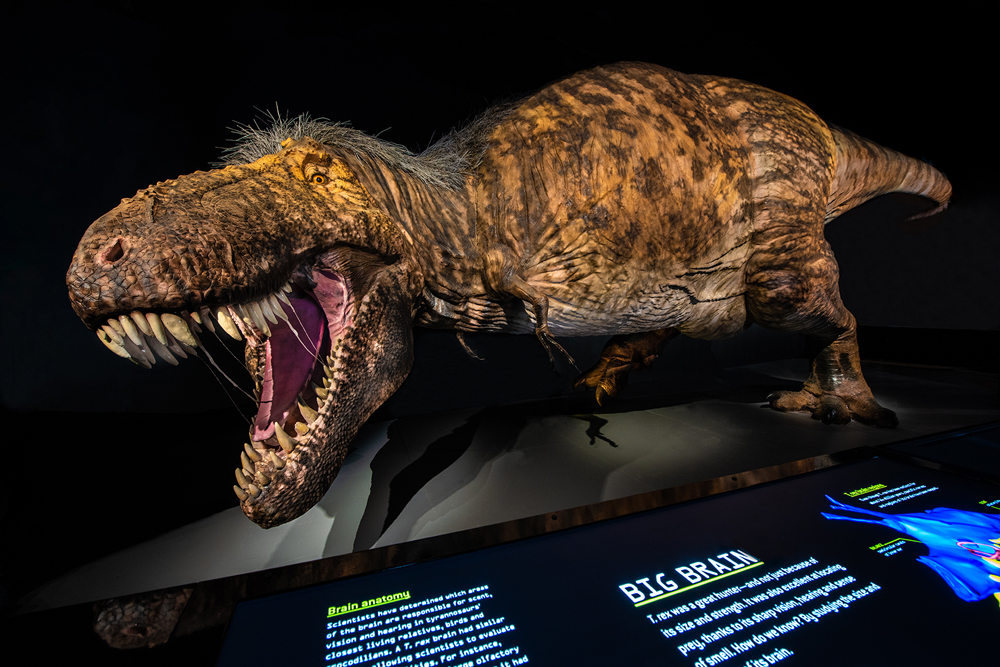
At the new American Museum of Natural History exhibit "T. rex: The Ultimate Predator" (Mar. 11, 2019 to Aug. 9, 2020) visitors will come face to face with a life-size model of a Tyrannosaurus Rex. Feathers on the reconstruction may surprise guests, yet this is to date the most scientifically accurate depiction of the ancient animal.
Read more about the recent discoveries that are transforming scientists' understanding of T. rex.
Big and tall
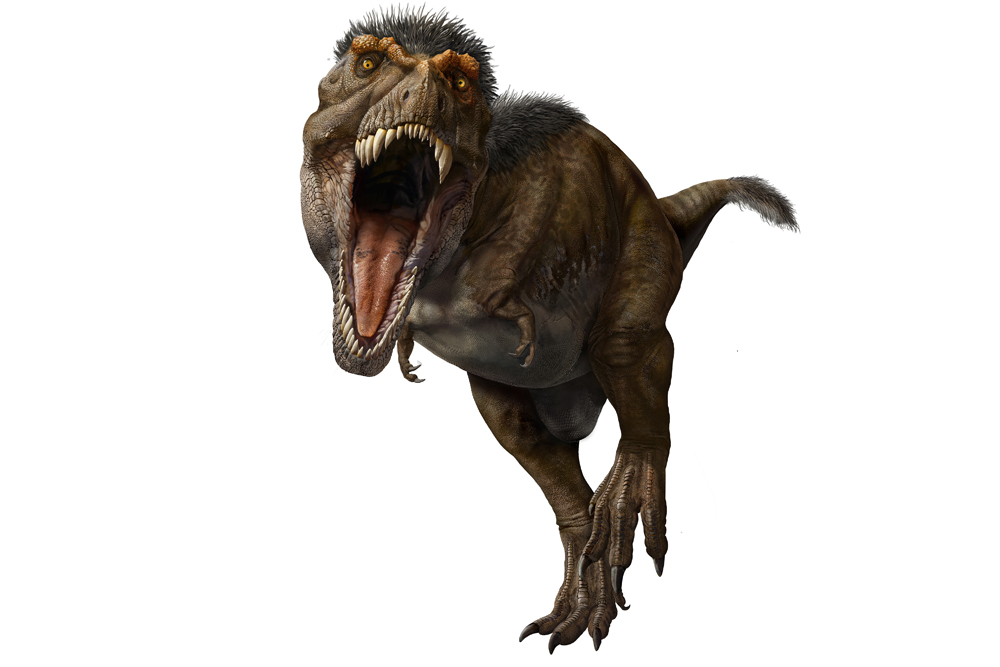
A fully-grown T. rex weighed between six to nine tons (5,500 to 8,000 kilograms) and stood over 12 feet (4 meters) tall at the hip.
Jaws and claws
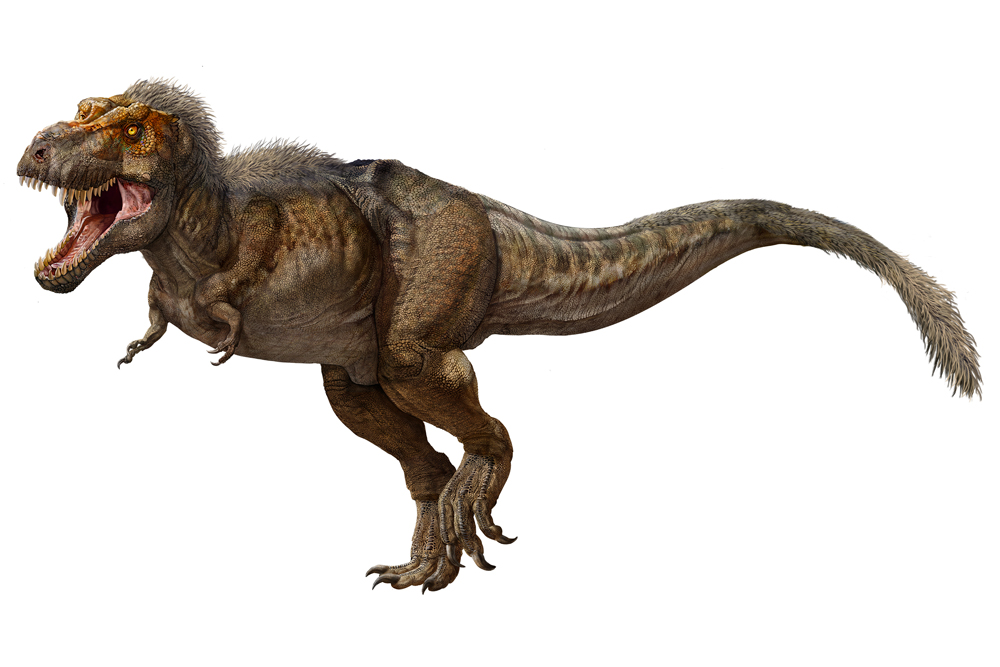
From nose to tail tip, an adult T. rex could measure more than 40 feet (13 m) long. With sharp claws and jaws strong enough to pulverize bones, this fierce theropod dominated its Jurassic ecosystems.
Groundbreaking discovery
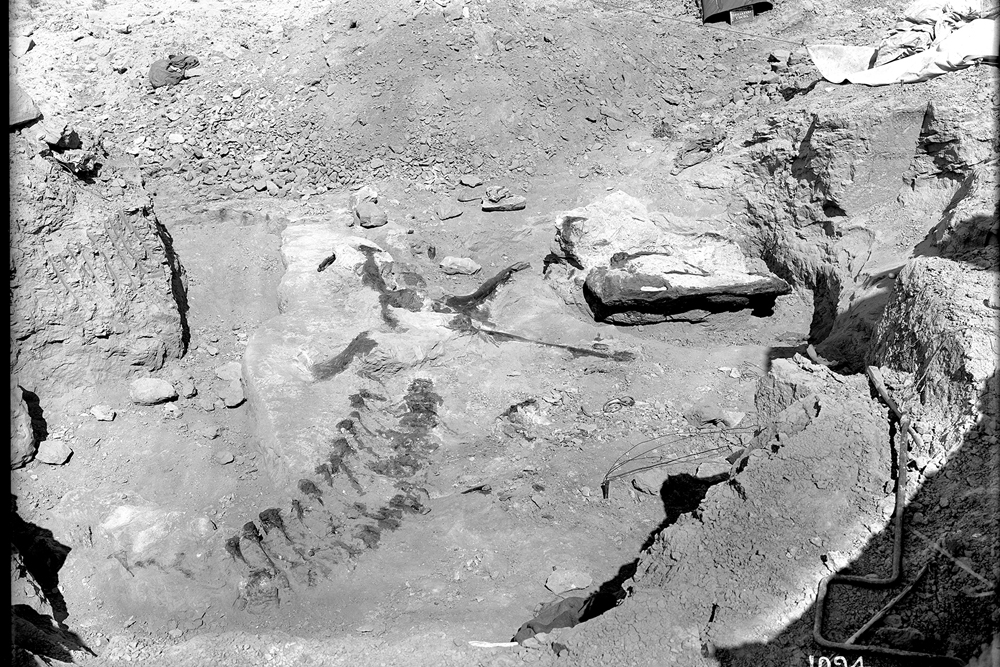
At Big Dry Creek at the Hell Creek Formation in Montana, the American Museum of Natural History's legendary dinosaur hunter Barnum Brown discovered a T. rex skeleton in 1908. A full-scale cast of the find is on permanent display in the museum's Hall of Saurischian Dinosaurs.
Painstaking work
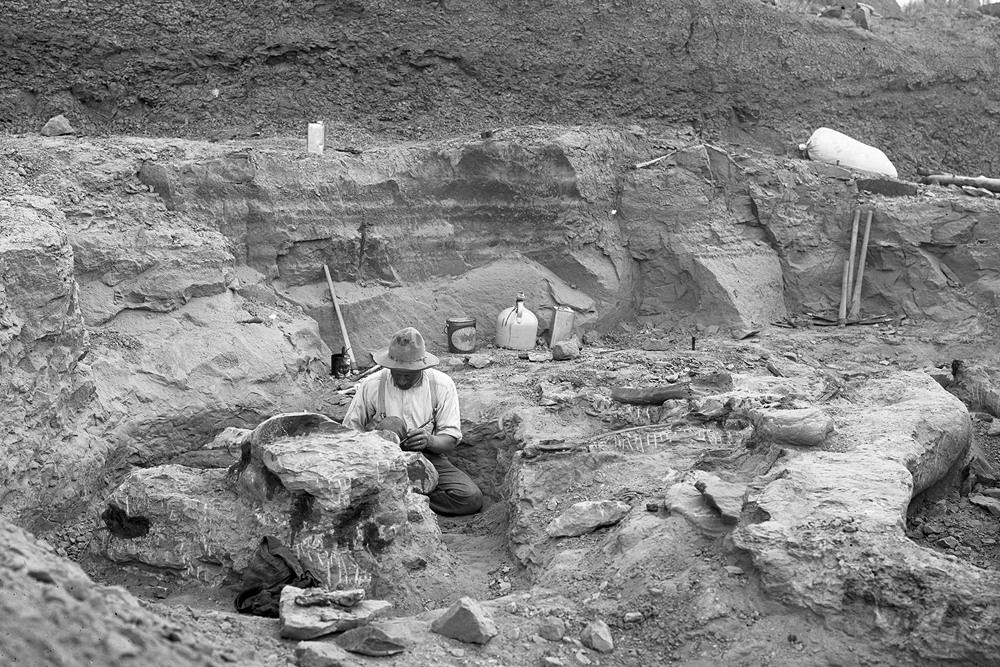
Here, AMNH preparator Peter Kaisen carefully excavates the T. rex skull at the 1908 dig at Big Dry Creek in Montana. This skeleton is known as AMNH 5027.
Fruits of labor

After much diligent work clearing sediment away from AMNH 5027 at the Big Dry Creek dig site, the skull of the enormous dinosaur was finally visible.
Get the world’s most fascinating discoveries delivered straight to your inbox.
Securing the fossils

At the dig site in Montana, the pelvis of the T. rex known as AMNH 5027 is lifted carefully out of the ground.
Assembling the pieces

Inside the museum's Department of Vertebrate Paleontology, AMNH preparator Charles Lang and paleontologist Barnum Brown examine AMNH 5027, the Tyrannosaurus rex skeleton uncovered at Big Dry Creek in Montana in 1908.
All in the family
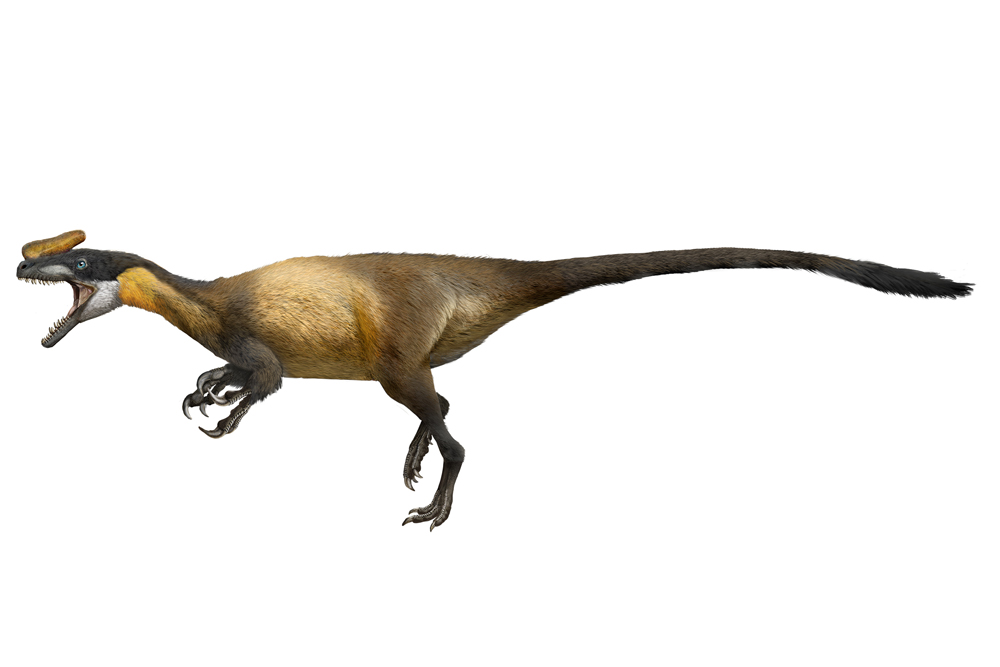
Proceratosaurus, the earliest known member of the tyrannosaur group, lived around 167 million years ago. The animal we know as T. rex came along a hundred million years later.
A feathered cousin
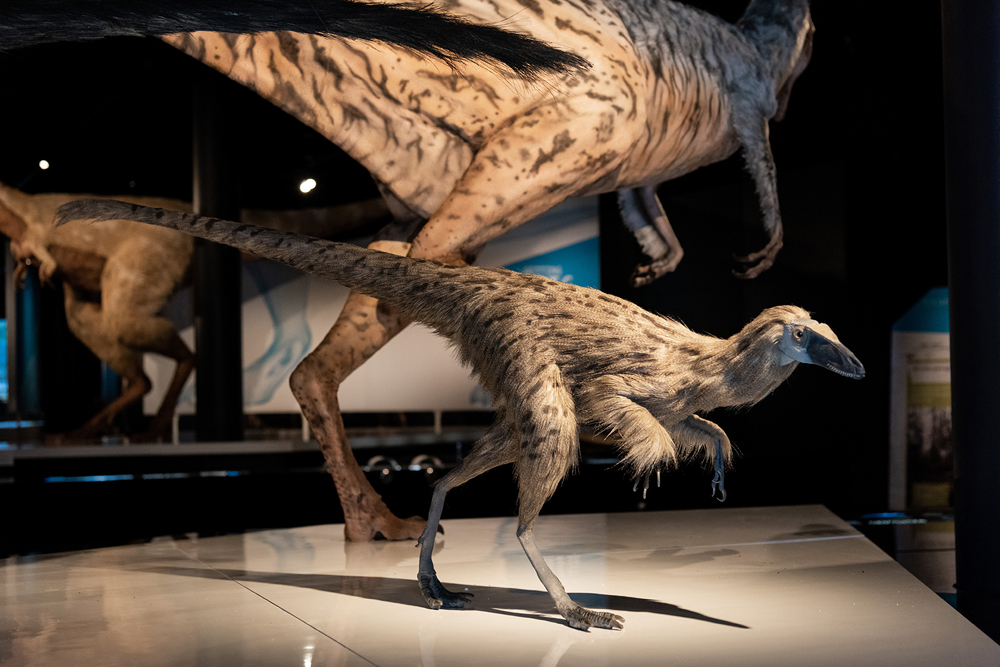
Dilong paradoxus lived around 127 million years ago, 40 million years after the appearance of the earliest known tyrannosaurs. For a tyrannosaur, it had unusually long arms. D. paradoxus was the first tyrannosaur discovered with fossilized feathers. Paleontologists argue that feathers were present not only throughout the tyrannosaur family, but in the earliest dinosaurs.
Filling in gaps

Scientists have found few tyrannosaur fossils dating from 125 million to 84 million years ago, so a new medium-size specimen discovered in 2009 helped to fill a significant gap in the tyrannosaur family tree. Xiongguanlong baimoensis, which lived between 125 million and 100 million years ago, offers insight into tyrannosaur evolution during the early Cretaceous.


